The popular destination attracts thousands of tourists every year, and the island indeed has something for everyone. Koh Samui is one of the best places to visit while travelling on a budget, as you can explore some must-see attractions on the island, without spending any money! For those who do not wish to burn a hole in their pockets, here is a list of the top 10 activities you can do for free in Koh Samui.
1. Big Buddha temple
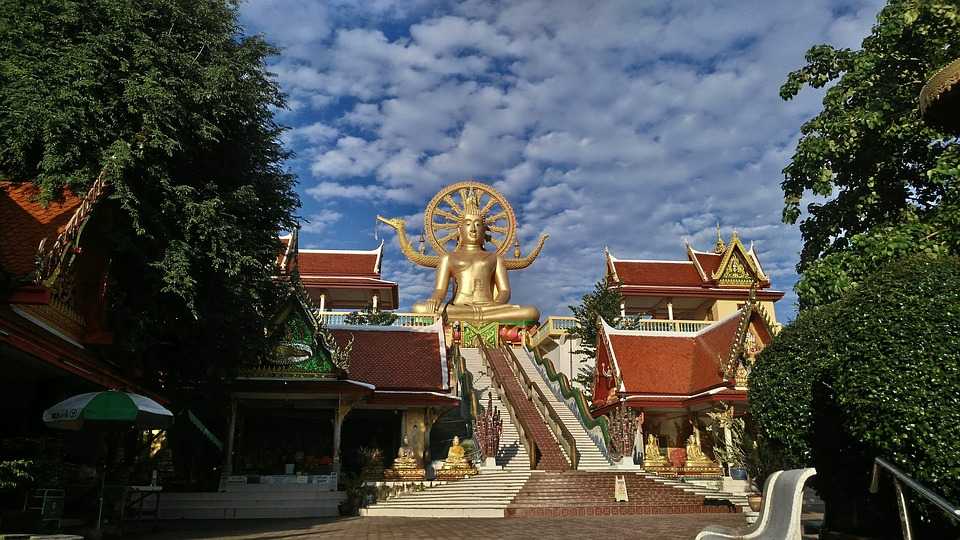
What to see: One of the most important landmarks of Koh Samui is the Buddha statue found in the Wat Phra Yai temple, which was built in 1972. The 12-metre high statue can be seen clearly from a distance and is a significant centre for several religious and cultural events. The Big Buddha statue, which can even be seen from aeroplanes while landing, sits in the 'mara' position, which is a symbol of enlightenment and steadfastness.
The temple is visited by devotees and tourists alike, who come to make religious offerings and admire its architecture. Around the statue, one can find several restaurants and stalls, selling souvenirs and religious artefacts. There is a winding staircase with a colourful dragon design, leading up to the statue. From this platform, one can enjoy spectacular views of the surrounding sea. One can also take a walk along the Big Buddha beach and enjoy its sunset views, which was formerly known as the Bang Rak beach.
Where is it: The Big Buddha temple, which is locally known as the Wat Phra Yai temple, is located on the small island of Koh Faan. The temple can be reached by a causeway from the village of Bangrak, which connects it to the main island.
When to go there: The temple is open for visitors all day long, but early morning is the best time to catch a glimpse of the traditional morning rituals.
Tips:
To respect the sacredness of the temple, be sure to dress modestly.
Try to avoid going to the temple at noon or mid-afternoon, as the steps to the Big Buddha would be too hot to climb up.
Sunday is the busiest day to visit the temple, so keep from going there on Sunday if you wish to avoid crowds.
2. Grandmother and Grandfather Rock Formations
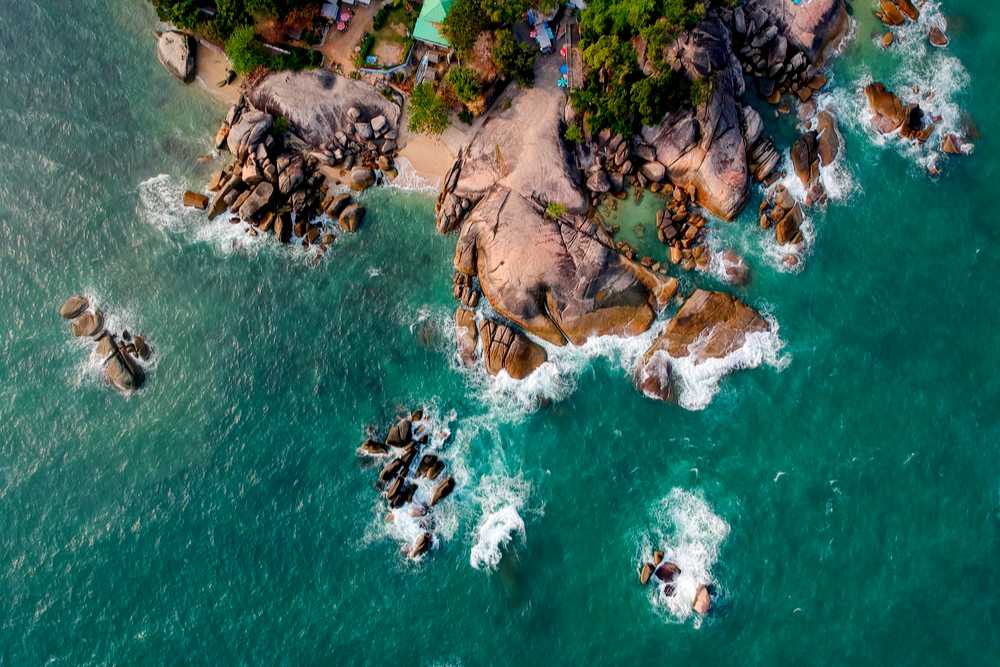
What to see: The Hin Ta and Hin Yai rock formations, also known as the Grandmother and Grandfather Rocks, are one of the most famous photography sites in the area. The two rocks are located right next to each other and have been formed naturally due to years of coastal erosion of boulders.
Often said to resemble male and female genitalia, the rocks are connected to the legend of an old couple, Ta Kreng (Grandpa) and his wife, Yai Reim (Grandma). They were said to have died at sea, after returning from the neighbouring province of Prachuap Khiri Khan after asking for a man's daughter's hand in marriage to their son. Turned into rocks after death, this act was said to be proof of their earnest intentions to the bride's parents. Locals today believe that visiting the site increases fertility.
One can also visit the surrounding white-sand beach, which offers clear pristine water with marine life. There are also some buffalo fields and plantations nearby.
Where is it: The famous rock formation can be found on the rocky coastline between Lamai beach and the traditional fishing village of Hua Thanon.
When to go there: The rocks can be visited during all daylight hours.
Tips:
Don't forget to bring a camera for postcard-worthy photographs!
Visit the nearby stalls for souvenirs, drinks and snacks., including the must-try Thai sweet called 'galamae'.
3. Namtok Na Muang Waterfalls
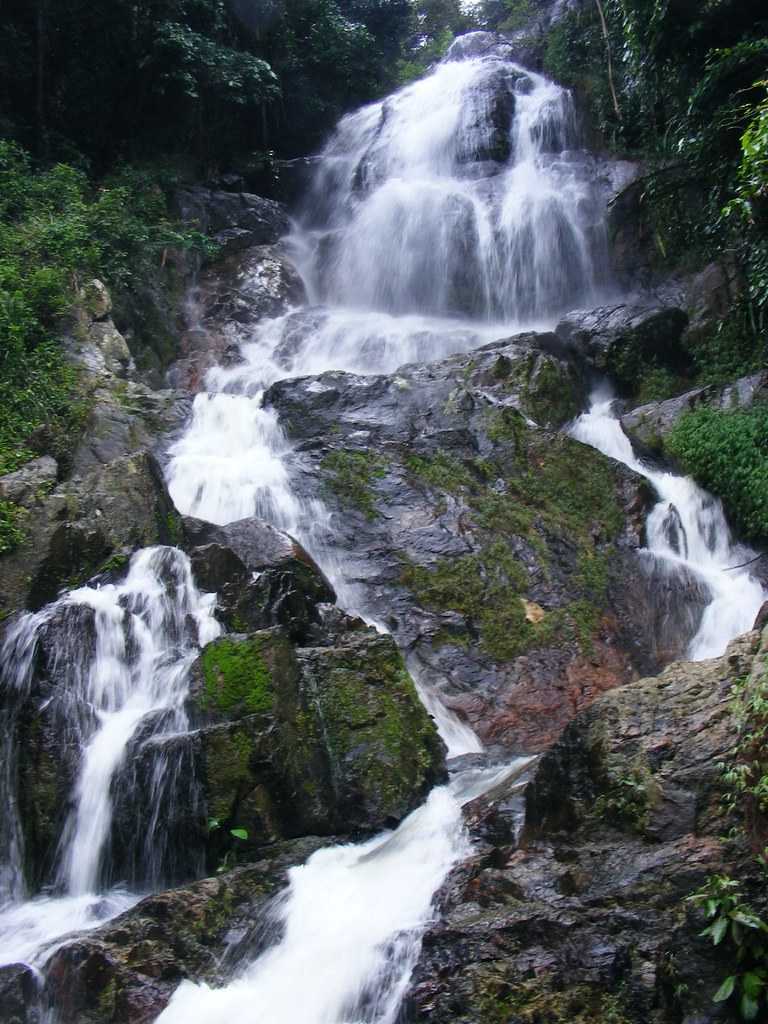
What to see: The Namtok Na Muang or the 'Purple Waterfalls' are considered to be the most scenic falls on Koh Samui and gets their name from the striking purple colour of the rocks. One can head to these two famous waterfalls to relax and swim in the cool waters of the natural pools of freshwater.
The first waterfall, Namuang 1, flows into a pool of cool water which provides a refreshing way to cool one's feet after a tiring day. It is located approximately 10 kilometres away from Nathon Town and is accessible by car or motorbike. Namuang 2 is an uphill walk from Namuang 1, about 30 minutes by foot.
Where is it: The set of waterfalls can be found inland, approximately 12 kilometres south-east from Nathon Bay.
When to go there: The falls can be visited at any time, but it is advisable to go during the daylight hours as it involves some amount of climbing.
Tips:
Although one can swim in the water, it is advisable not to jump from the rocks or dive into the water, due to the possibility of rocks in the water.
Be careful to avoid visiting the entrance of the waterfall, if you do not wish to pay an admission fee. After driving past the parking lot, you will reach a fork in the road. The road going upwards reaches the entrance of the waterfall, while the road downwards leads to a way to view the waterfall free of cost!
Bring swimwear with you, if you wish to swim in the water.
Be sure to wear non-slippery sandals or walking shoes to avoid injury.
Pack some snacks and beverages for the hike, as there are no stalls along the way.
4. Wat Plai Laem Temple
_20180705180347.jpg)
What to see: The Wat Plai Laem is a Buddhist temple on Koh Samui, built in 2004. The site is a favourite among tourists and allows one to gain insight into the customs and traditions of Chinese Buddhism. The temple is built over a lake, with three separate structures, each connected to the land via bridges.
The temple features statues of the laughing Chinese Buddha, as well as that of the 18-armed goddess of mercy and compassion, Guanyin. Her eighteen arms signify her ability to reach out and provide help to those who pray to her. She is also said to the goddess of fertility and is believed to be able to protect sailors at sea. Here, one can also witness beautiful teak entry doors and a large 'ubosot' or a ceremonial hall in the lake.
The temple is visited by hundreds of tourists and Thai-Chinese devotees daily, showing the presence of Chinese heritage in Koh Samui. Surrounding the temple, one can see the large lake, filled with fish and turtles. They can be fed for an amount of 10 bahts, which goes towards the temple as a donation. Feeding the fish is also believed to bring fortune and prosperity to the visitors.
Where is it: The temple is located on Road 4171, close to the Big Buddha temple.
When to go there: The Wat Plai Laem is open during all daylight hours. It is particularly enjoyable during Chinese festival events like Chinese New Year.
Tips:
Although the entrance to the temple is free of charge, donations for the temple are always welcome.
It is advisable to dress modestly and avoid wearing revealing clothes or beachwear to the temple. Worshippers often dress in white when visiting the temple.
5. Wat Khunaram's 'Mummified Monk'
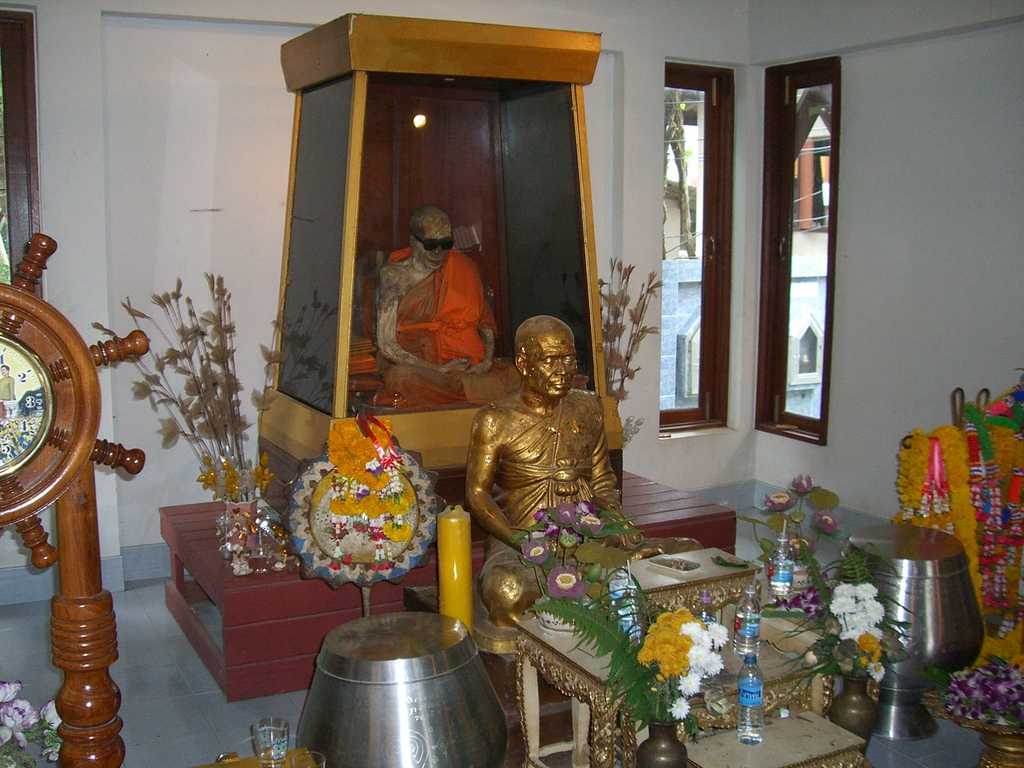
What to see: The Wat Khunaram temple is a Buddhist temple, where locals visit to pray and make merit. One is free to participate in or observe the daily rituals. Hundreds of tourists flock here to witness the famous mummified monk, whose corpse has not decayed for ages.
The remains belong to the ex-abbot of Wat Khunaram, Luong Pordang. He was ordained a monk in the year 1944 and dedicated the rest of his life to being a monk. The name was given to him as a monk was Phra Khru Samathakittikhun.
The monk died in the year 1973 in a sitting position. A week before his death, he stopped talking and eating. Based on the stories told, he was able to predict the exact day of his death and the fact that his body would not decay. Since his death, he was mummified in an upright position, hoping to inspire future generations to follow the path of Buddhism and to remain as a visual reminder of the Buddha's teachings. The display of his body in the temple reflects the Thai values of reflection and acceptance of death.
The monk's body has remained on display in a glass at the temple ever since and has shown little sign of decay. It is believed that his simplicity, health and power of meditation allowed his body's preservation after death. The only observable decay in the past few decades is that of his eyes, which has now been covered by sunglasses out of respect.
Where is it: Wat Khunaram is located on Route 4169, close to the Na Muang waterfalls and Hua Thanon. It is about six kilometres from Lamai Beach.
When to go there: The temple is open during all daylight hours. It is best to go during the early morning or afternoon, as this is when religious activities are carried out.
Tips:
Do not hesitate to donate money for the upkeep and expansion of the temple, if you wish to do so.
Avoid wearing short or sleeveless clothes, as this is a religious site.
6. Lad Koh Viewpoint
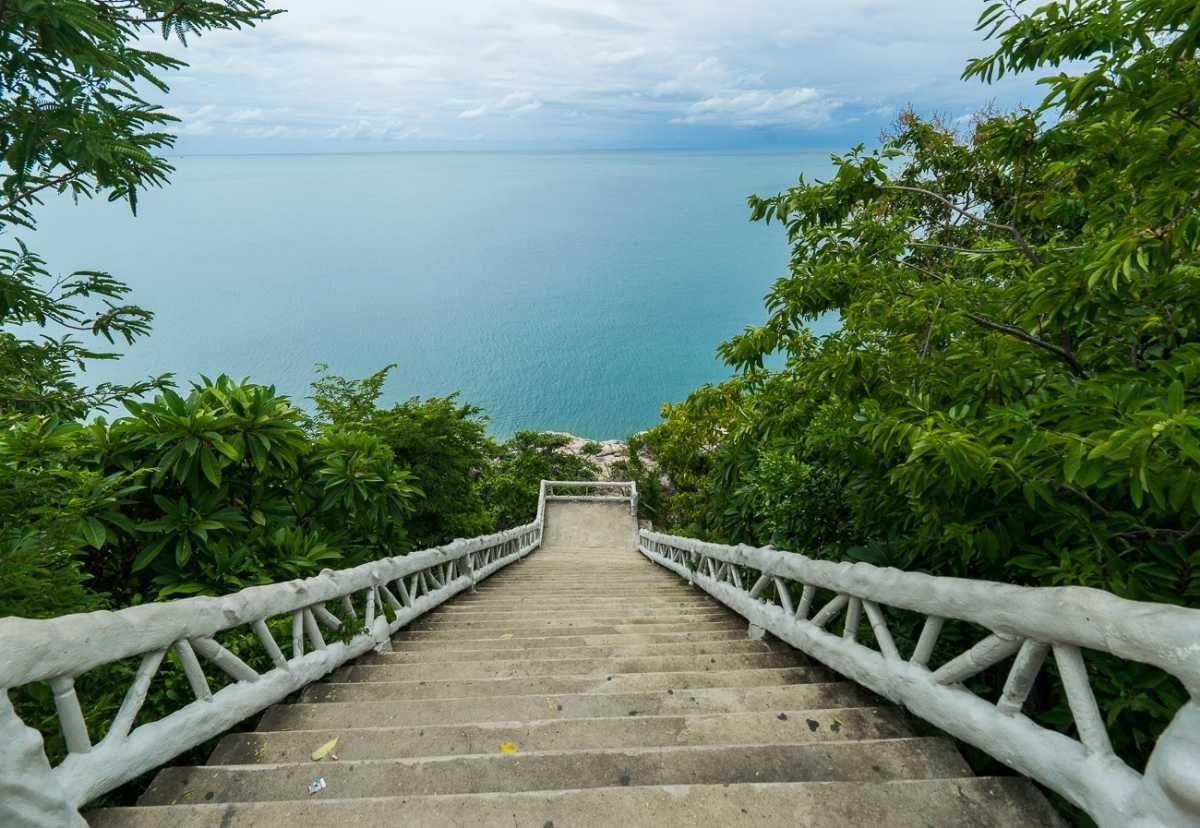
What to see: The Lat Ko or Lad Koh viewpoint offers you the best panoramic views over the Chaweng Beach and the surrounding sea. This famous Koh Samui landmark, also known as the 'Zenith Viewpoint', is built with a downwards path which leads to a rocky shore, offering a spectacular view of the sunrise.
Where is it: The viewpoint can be found on Route 4169 between Chaweng Beach and Lamai Beach.
When to go there: It is best to visit the spot during daylight hours, especially sunrise time, for the best view.
Tips:
Climb the stairs to the seashore slowly and carefully, as they can be quite steep for some.
For dessert lovers, the parking lot at the Lat Ko Viewpoint has an ice cream truck, which serves delicious ice cream daily.
7. Wat Ratchathammaram Temple
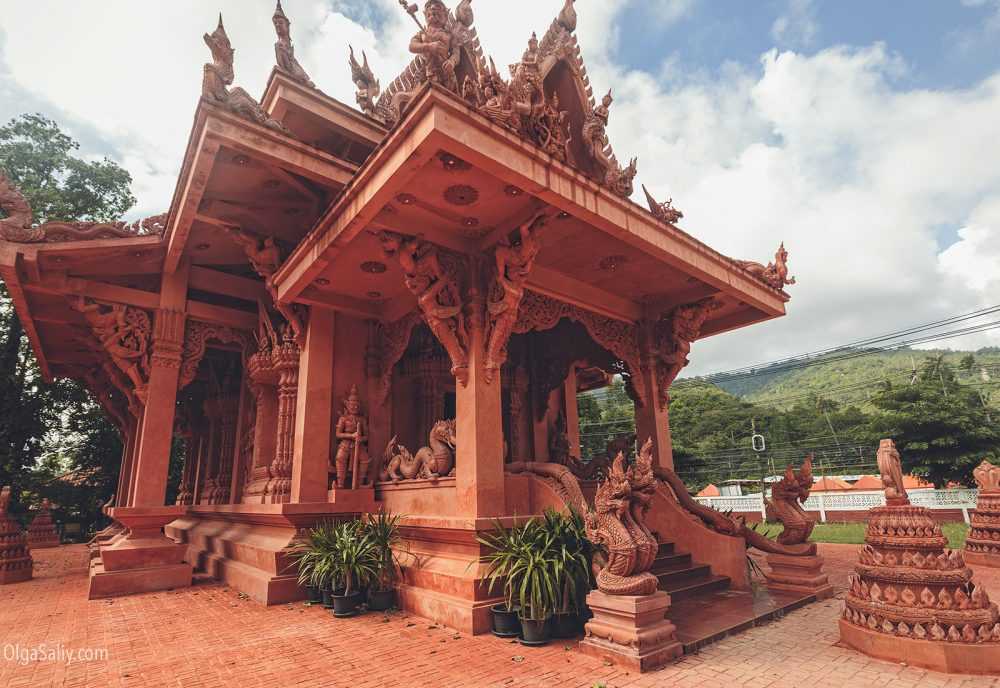
What to see: Distinguished by its brick red colour of the building's structure, the Wat Ratchathammaram or the Wat Sila Ngu temple is unusually noted for its ongoing construction since years. The temple is adorned with statues of giant warriors, snakes and dragons guarding the temple doorway, and a beautiful staircase that has railings leading to the sea. One can also find Hindu gods, such as Ganesha (the elephant-headed God), Hanuman (the monkey warrior God) and other deities on the walls of the temple.
The interiors of the temple are decorated with murals, illustrating stories of religion and daily life. Inside the temple, one can also find the sacred Bo tree growing. One can also visit the observation deck inside the temple, which offers views of the shore and the surroundings. There is also a cemetery and houses for monks within the temple grounds.
Where is it: The temple is located on the main Ring Road, south of Lamai beach on the island of Koh Samui.
When to go there: One can visit the temple during daylight hours.
Tips:
It is advisable to dress modestly as this is a place of worship.
8. Fisherman's Village
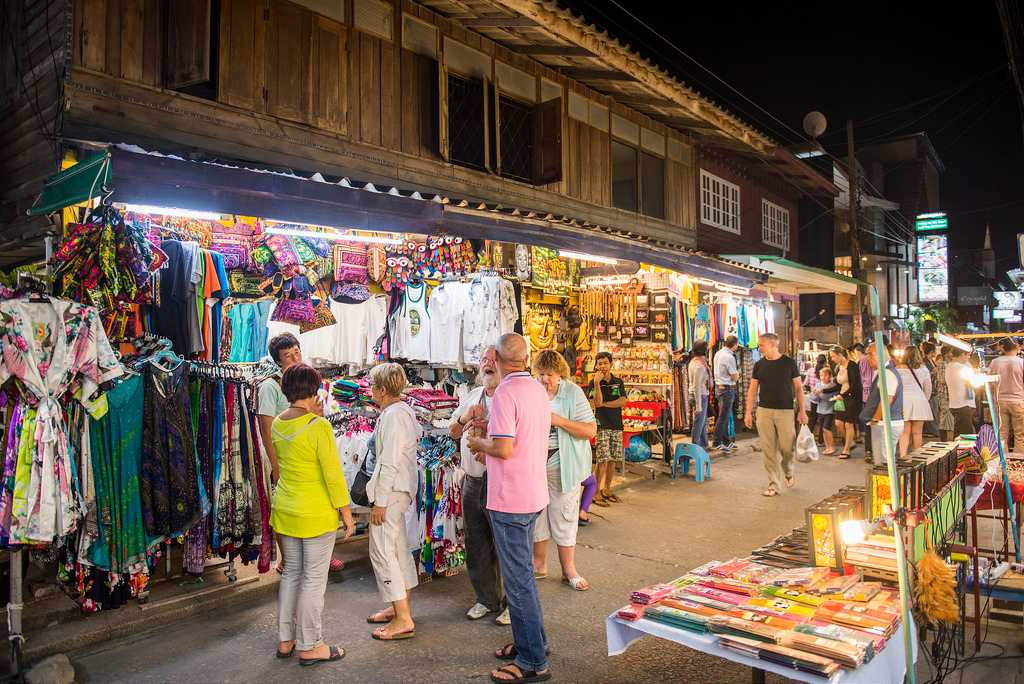
What to see: The Fisherman's Village is another historical landmark, famous among tourists in Koh Samui. The rustic buildings and the boutique stores, restaurants and hotels in Bophut add to the speciality of this destination. Once home to a fishing community, Bophut is known today for its charming, archaic look. The area also offers glimpses into Chinese-Thai culture, as well as unbeatable views of the sea towards Koh Phangan.
Although a variety of the buildings house restaurants, hotels and shops, the area of Bophut is unique as a tourist attraction in itself. Famous for its range of knick-knacks, it is also especially famous for those shopping on a budget. On Friday, the area becomes a site for the Fisherman's Village Walking Street Market, which attracts shoppers from all over.
Where is it: The Fisherman's Village can be found on Bophut Beach Road in Bophut, on Koh Samui.
When to go there: It is best to visit the Fisherman's Village during or after sunset to avoid sightseeing during the hot afternoons. If you wish to visit the Fisherman's Village Walking Street Market, then head here on Friday.
Tips:
Check out the back side of buildings, since many of them are open from the back, offering magnificent views of the sea and its surrounding areas.
9. Beaches
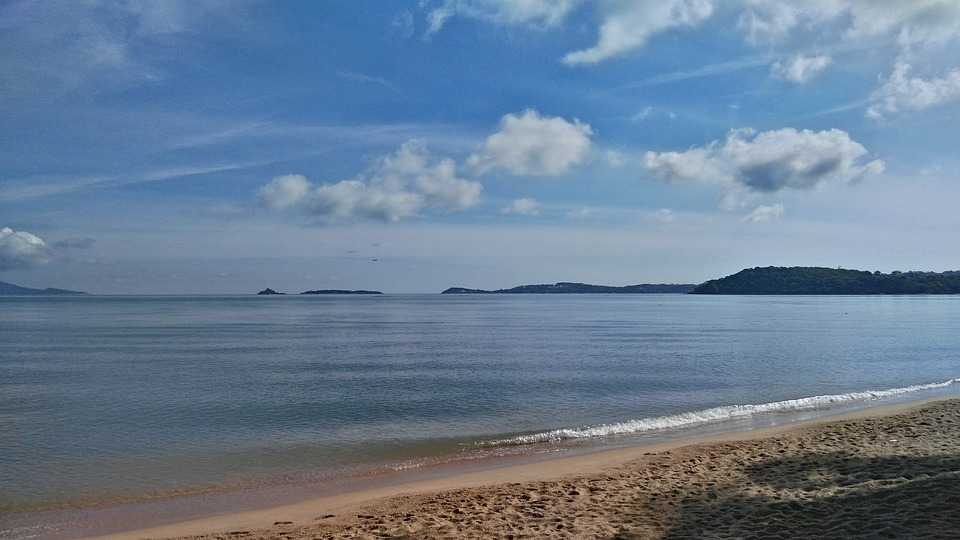
What to see: When you think of Koh Samui, the first thing that is likely to come to mind is its stunning beaches. Whether you are the kind of a person who enjoys relaxing at a quiet and secluded beach or one who prefers going with a large, noisy group, Koh Samui has a beach for you.
One of the most famous beaches in the Chaweng Beach, which is the largest beach on Koh Samui, with a view of the east coast of the island. It is known for being clean and has some hotels lined up on the beach. One can often see beach parties with live DJs here. The Lamai Beach, lined up with many beachfront hotels and restaurants, is the second largest beach of Koh Samui. Another favourite among tourists, this beach is ideal for swimming in.
Other tourist favourites include the Silver beach with its giant rocks and lush green hills, the Bophut Beach, with its clean waters for swimming, and the palm tree-lined Maenam Beach with some waterfront restaurants. Head to the Bangrak or Big Buddha Beach for the best views of sunsets. For those who want to enjoy the serene atmosphere away from the hustle and bustle of the island will enjoy the Lippa Noi Beach, the Bang Po Beach, the Baan Tai Beach and the Thongson Bay. There are many other beaches other than those above. Some are quite hidden or are private beaches for hotels, but there is no stopping those with a craving for adventures.Tips:
Remember to always carry sunscreen and a hat, for those with sensitive skin.
Be sure to check whether the beach you visit is suitable for swimming before going, as some beaches have rocky shores and can be unsafe for swimming.
10. Ladyboy Cabaret Shows

What to see: Although the Ladyboy Cabaret Shows may not be everyone's cup of tea, they are a unique form of entertainment, not common in other parts of the world. The shows involve lip-synced performances by Thai katoey or members of the third sex, complete with choreography, make-up and costume. The cabaret show bars feature some shows each day, with family-friendly shows taking place earlier. Some favourite locations for cabaret shows include Paris Follies Cabaret and Starz Cabaret Samui.
Tips:
It is best to go into these shows with an open mind and showing good humour.
Although entry is free at some cabaret show bars, drinks are not complimentary.
It is recommended to book a table in advance, especially on weekends.
The island of Koh Samui is more than what meets the eye and offers much more than just luxury beaches, posh resorts and spas. It is home to a variety of religious, cultural and scenic landmarks, all of which are available free of cost or for a small fee. All one needs to explore this island with ease is some free time and a sense of adventure.
